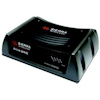
Does your electrical contractor know his trade thoroughly or is he only guessing?
In Australia, electrical installations generally must be installed according to the Australian Standard - AS3000, which is also know in the trade as the "wiring rules".
The standard is very important and ensures safe and reliable operation of your equipment. As a licensed electrician your contractor must have a deep understanding of these rules... but many contractors do not. They can get by when they are working on a simple job, but as jobs get more comlex they are really just flying blind. A fair dinkum contractor will be carrying a copy of AS3000 with them in the truck at all times.
Here are a couple of questions for you to ask your existing electrical contrator.
Keep a close eye on his reponses. I bet he will be quite surprised you are asking such detailed questions!
Ask to see detailed calculation sheets to following questions. To get the proper answers they need to be written out and mathematically determined. Your contractor should be able to show you the references in AS3000 from which he gained the information.
- Calculate the fault loop impedance for a given circuit at your installation to ensure it complies wih AS3000 wiring rules. The calculation sheet should have references from AS3000 (and maybe even AS3008). The references should refer to resistance of the cable for a given length and also account for cable size, type and manner of installation. It should take into consideration the type and class of circuit breaker (or fuse), with references to cut off times in the event of a short circuit. For consumers mains the impedance of the transformer in the street should also be taken into consideration.
- Calculate the cable size for a new machine. This one sounds simple and it is unless you don't know what you're doing. Correct cable size needs to account for more than just how much current a machine consumes. Lots of factors make the cable size go up. ie, size (and type) of circuit breaker, length of cable, type of cable, installation conditions (eg. in wall, underground, in sunlight or inside insulation.) Your contractor should be able to explain to you how he came up with the cable size taking into account all these factors. They are all listed in AS3000!
- Calculate the maximum demand for a given set of mains or sub-mains. This should produce a detailed calculation sheet with a Maximum Demand Number at the end. It is basically an audit of everything you have installed. AS3000 contains assumptions of how each load is to be considered and how much each load contributes to the total in a real world situation. It is more than a matter of just adding all the circuit breakers together as not everything ever gets switched on at the same time. AS3000 has all the info in it that the contractor can use to make the calculation.
- Measure the power factor at your installation and determine a correction solution if required. This one is only good for factories and large installations where there is lots of motors that start and stop. Motors generally disrupt the power supply. A bit like turning on and off a tap constantly, (you know when the old pipes "hammer" in your house?). Power factor correction is the process of smoothing out this disruption. Power factor can be measured if the contractor knows how to do it.


